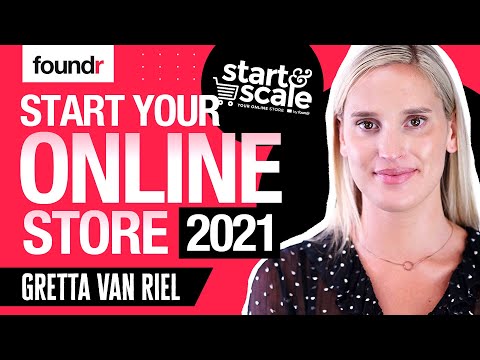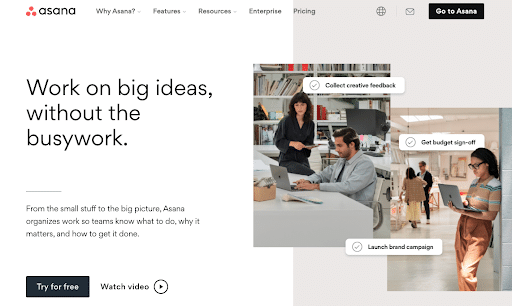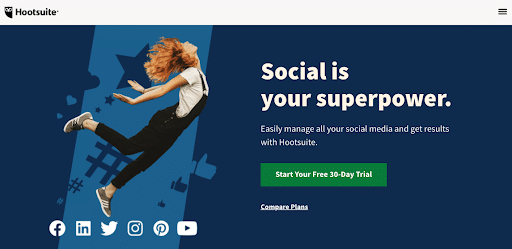Unique value proposition (UVP) is a big, intimidating word that often sends brand-new entrepreneurs scrambling for an Advil and a glass of water. Settle down there—it’s more straightforward than you think.
Consider this situation. Your distant cousin hears you’ve started a business and looks for it on Amazon. She finds your products, but she also finds a dozen other similar-looking items. She asks you, “What makes your products different from all these other ones?”
Boom. Time to tell her your unique value proposition.
That might be…
- Our products are cheaper and help you save money.
- They’re made with higher quality materials, so you never question their durability.
- We source our materials locally, which gives back to the community.
- We provide top-notch customer support—you can always speak to a real-life expert.
- Unlike the competitors, our products also do X, Y, and Z to help you with A, B, and C.
Pretty simple, right?
However, not every UVP is as compelling as it should be. Some miss the mark, and that leads to missing out on customers. Sometimes, you need to better identify and label your UVP. Other times, you need to more intentionally create it.
Whatever the case may be, we’re here to help you nail your unique value proposition. Below, we’ll walk you through the critical elements of your UVP and how to ensure it’s more irresistible than anything your competitors offer.
What Is a Unique Value Proposition?
Your unique value proposition (or unique selling proposition (USP)) is a short-and-sweet statement that defines who your product helps, what pain points it solves, how it helps your target market, and what makes your product different.
Let’s break down each of those elements.
Define Who Your Product Helps
Your UVP should define the target market for the product. You want your customers’ ears to perk up when they read a statement or hear a commercial and think, “Hey, that’s me!”
Your product isn’t for everyone. It’s for someone special. It’s for a mom, boyfriend, soccer player, accountant, janitor, Christian, or sick person.
Don’t make your audience guess whether the product is meant for them—tell them it is.
Label the Pain Point(s)
Raising kids is hard. Cooking healthy isn’t easy. Finding time for your passions feels impossible.
These are pain points your customers (and maybe you) feel day-to-day that your product can help alleviate (hopefully). Label these pain points for your customers, and help them recognize what might be making them feel sad, burnt out, or unsatisfied.
Once your customer identifies their problem, they’ll start looking for a solution—and it’s a good thing because that’s what you’re about to give them next.
Describe How It Helps Them
Illustrate how your product makes your customer’s life better. Focus on benefits and steer away from features.
Your customers don’t care that your laser eye surgery is the latest and greatest in wavefront technology—they want to know if it’ll help them see better. Your customers don’t care if your milk is fortified with calcium—they want to know if it’ll give them stronger bones and healthier bodies.
Highlight What Makes Your Product Different
Lastly, it’s time to touch on the “unique” portion of your value proposition. What makes your product different (read: better) than what your competitors offer?
Your customers subconsciously (and sometimes consciously) contemplate this every time they go shopping. Why should I buy this brand of toothpaste over this one? What’s the difference between this off-brand of cereal and the original? Should I choose this lawnmower or this one?
Many brands make the mistake of differentiating their products with features instead of benefits. When highlighting what makes your product different, keep the focus on how it helps your customers.
For example, don’t just say your product is cheaper—say it helps your customer save money so they can buy other things. Instead of saying your product is made with high-quality materials, let your customers know that they don’t need to plan on replacing it anytime soon.
Before you jump ship and go back to selling vanilla products, take a look at these data-backed benefits.

7 Tips for Writing Your Value Proposition
Do you feel like this whole unique value proposition thing is getting tedious? You’re probably wondering if this is all necessary.
Yes, it is. UVPs are what differentiate the small-timers from the big-time performers. Invest the time and energy into making this work.
Creating the perfect value proposition for your product won’t come all at once—you might need to work through a few drafts first. Your customers and products will change from time to time, and your UVP needs to, as well.
Need help fine-tuning your UVP? Follow these tips to write value propositions that convert.
1. Understand Your Target Customer
The better you know your target customer, the better you’ll be able to sell to them. Ideally, you want to know everything about them before developing your product, but sometimes more profound learnings come later.
You might create multiple buyer personas for some of your products. For example, you might sell milk directly to consumers and yogurt-making companies. Understand both of these buyers so that you can identify their pain points and highlight how your product solves them.
2. Get to the Point
Your unique value proposition isn’t an elevator pitch—it’s a one-liner. You should be able to communicate your UVP in a single simple sentence.
Gather your UVP research, slides, and documentation and condense them into a handful of words. The fewer, the better.
Now, don’t confuse this with a slogan or tagline. That’s different. “Just Do It” and “Got Milk” are slogans—slogans don’t necessarily communicate the value of your products.
Cut any technical jargon from your UVP. You want your target market to quickly and clearly understand your product without running any Google searches.
3. A/B Test Your UVP
An A/B test is where you experiment with multiple versions of something (with only a single difference between each) to see which performs best. Running an A/B test takes the guesswork out of your UVP and helps you narrow down the best-performing options.
For example, you might run an A/B test that looks something like this:
- Option A: Easiest tool to host and grow your podcast
- Option B: Fastest tool to host and grow your podcast
- Option C: Cheapest tool to host and grow your podcast
Once you find which version of this example resonates the best with your audience (by measuring engagement metrics like clicks, opens, and conversions), you could run additional A/B tests. Let’s pretend Option A was your top-performing test.
- Option A: Easiest tool to host and grow your podcast
- Option B: Easiest platform to host and grow your podcast
- Option C: Easiest app to host and grow your podcast
Keep running this test until you’re satisfied with the results.
4. Revisit and Refine Your UVP Often
Establishing your unique value proposition isn’t a one-and-done ordeal—it’s something you’ll need to tweak often. However, it gets easier each time you do it.
Customers, situations, and products change. You might need to change your UVP to differentiate from new competitors entering the marketplace, or you may need to adjust to better cater to modern concerns.
For example, when COVID-19 broke out, people weren’t looking for the fastest checkout options anymore—they wanted the safest.
5. Use a Conversational Voice and Tone
Real-life humans don’t use words like “orchestrate” and “streamline” in their everyday conversations. Instead, they might use basic words like “work together” or “do it faster.” Use the phrases your customers use—not what the dictionary or thesaurus recommends.
When you speak as your target market speaks, it makes your brand and product more relatable. Imagine a skateboarder is shopping for a new board. Here’s what they find when researching products:
- Product 1: New composite deck technology decreases air drag and improves durability
- Product 2: Flip faster, ride smoother, and grind longer
Which do you think speaks to the skateboarder better? Product 2, right? That’s likely the one they’re going to purchase. Product 1 doesn’t speak to the buyer at all—the buyer doesn’t care about new technology. They want to know how it will impact them and their sport.
6. Avoid Hyperbole
“You did it! Congratulations. World’s best cup of coffee. Great job, everybody! It’s great to meet you. Hi.” — Buddy the elf
It’s 2022—nobody is falling for the “best ever” claims (unless you’re Buddy). It’s a waste of words and characters, and it’s not convincing your customer to buy your product.
Stick to claims you can prove. You can use descriptions like fastest, easiest, most secure, and highest up-time because these are declarations you can verify. Just make sure you can back it up.
7. Don’t Try to Be Everything
Your product can’t be everything to everyone. It needs to target a specific customer’s specific problems with a specific solution.
When you try to please everyone, you end up pleasing no one.
Imagine an outdoor brand that sells a jacket that’s perfect for cold, snowy nights on the mountain and great for hot, sunny days at the beach. Can it really do both? Or are they just trying to sell a single product for every use case and buyer?
Focus on what your product does best and drive it home. Don’t flirt around with things it may do OK or might be an alright fit for. These additions weaken your unique value proposition.
Real-Life Value Proposition Examples
Asana

“Work on big ideas, without the busywork.”
Anyone who’s used project management software knows that the time-saving benefits come after hours, days, and weeks of setting up your system and processes. Asana promises they’re different.
You can still work on big ideas, but you don’t need all the nitty-gritty work. Asana is effectively saying the product isn’t just for small “maandpa” businesses—it’s also for large corporations with big needs.
Hootsuite

“Easily manage all your social media and get results with Hootsuite.”
Hootsuite’s unique value proposition touches on several pain points of social media managers:
- Easily manage: Not every platform is simple to learn and use—Hootsuite put “easily” as the very first word in their UVP.
- All: Social media managers don’t want to bounce between tabs and applications. They want one tool to manage everything.
- Get results: You don’t want to just share posts. You want engagement: likes, clicks, followers, leads, and sales.
GoToMeeting

“Fast, reliable, and secure video conferencing. GoToMeeting empowers your remote workforce, while keeping your business safe and secured.”
Businesses need a reliable video collaboration tool, but they need one they can trust. With all of Zoom’s privacy and security issues, GoToMeeting is positioning itself as the “safe and secured” choice for security-conscious businesses.
Petzl

“The Petzl Summit 2 Ice Ax is a lightweight ice axe that offers an excellent balance between price and performance for classic mountaineering.”
Petzl’s description of their ice axe is nothing fancy, but it touches on the key points a potential shopper is looking for: lightweight, price, performance. They understand what ice climbers want in an ax, and they hit it home instead of focusing on features.
Imagine if Petzl had said this instead:
“The Petzl Summit 2 Ice Ax weighs 14.1 ounces and is made of heat-treated steel that makes it cheaper while still being able to perform.”
This sentence touches on all the same points, but it does so in the wrong way. For example, shoppers don’t want “cheap” products, and “still” sounds a lot like a “but”—which nobody wants in a product.
Learn How to Market Your Value Proposition
Once you fine-tune your unique value proposition to perfection, it’s time to get it in front of your prospective buyers. How you do that is up to you.
You could set up a content marketing plan, grow your Instagram following, or start running Facebook Ads. Not sure how to do any of those things? You’ve come to the right place.
Check out our catalog of free classes to learn everything you need to know to grow your business. Our instructors will walk you step-by-step through each lesson, helping you master the techniques and hit the ground running.
Ready to better market your value proposition? Enroll in a free class now.
The post How to Write Your Unique Value Proposition (Tips + Examples) appeared first on Foundr.
Source :- https://foundr.com Author :- Jesse Sumrak Date :- January 31, 2022 at 12:05AM

